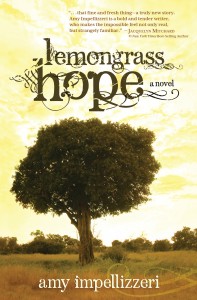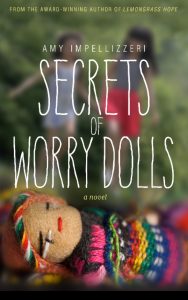Symmetry and Picasso: What I’ve Learned From My Third Grade Art Students About Writing
 Every year I present a week-long program at my kids’ elementary school called “Art Goes to School.” It’s a wonderful idea sponsored by the local art institute. I meet with volunteers weekly throughout the fall to study a portfolio (which changes annually) of about 20 reproductions of pieces located in art museums throughout the world. We study and discuss the artists and the relevant periods represented by that year’s portfolio, share useful teaching strategies and then take the portfolio to our respective schools for one week each over the next few months.
Every year I present a week-long program at my kids’ elementary school called “Art Goes to School.” It’s a wonderful idea sponsored by the local art institute. I meet with volunteers weekly throughout the fall to study a portfolio (which changes annually) of about 20 reproductions of pieces located in art museums throughout the world. We study and discuss the artists and the relevant periods represented by that year’s portfolio, share useful teaching strategies and then take the portfolio to our respective schools for one week each over the next few months.
Since I usually present to a variety of age groups that range from 8 through 13, I try each year to come up with something that will catch the kids’ attention and foster conversation. One year we made street art on long brown paper canvases I taped up to the cafeteria walls. One year we made 3-dimensional Warhol-like reproductions, in which each child brought in a can of soup and decorated the label to create pop art. One year I hosted a game show called: Art Goes to School or Instagram? In which contestants had to figure out whether the answers to the questions pertained to the portfolio in front of them or their favorite social media app.
Many of the kids have never been to a real art museum and it’s a wonderful opportunity to open their eyes to something they have never seen before.
At the end of the week, I’m always exhausted and gratified and . . . surprised. Less now than I was a few years ago, as I’ve been doing this for about 5 years.

Lemongrass Hope, Amy Impellizzeri
Surprised because, while I used to be certain the kids would be drawn to the more recognizable pieces of art – the landscapes, the Monet’s, the realistic horse paintings – I’ve realized now that the Lichtenstein’s, Picasso’s, and Dali’s will always fascinate and dominate our limited time together. The mismatched shapes and unreal color schemes will lure more than a few students into trying to replicate them. The lack of symmetry will draw them in, rather than repel them.
“It doesn’t look like a woman’s face at all,” the kids told me universally about the Joan Miro portrait last year. But still they pored over it, talked about it, deconstructed it all week long. I offered: “Well, it doesn’t look like a face you’ve ever seen before. But it is a face, no?” I pointed at the eyes, chin, and mouth in various locations, and the kids turned their heads and nodded. They didn’t all love it. But they all wanted to talk about it.
And they all agreed – yes, we’ve never seen anything quite like that before.
What then does this have to do with writing?
Just this. Everything.
I have a dear aunt who has recently taken up drawing and sketching. Her talent is undeniable and I love to study her creations. In fact, she has drawn me recently and the result is amazingly realistic, but she claimed it was one of her hardest pieces yet because: “You are too symmetrical,” she joked. “You’re almost impossible to draw.”
Budding artists are taught to look for the symmetry in their creations and replicate them. Composition, balance, and lines are important. The very elements artists like Picasso and Kandinsky turned on their head. Not everyone loves abstract art, but there can be no denying that it is interesting, eye-catching, and my Art Goes To School students inevitably have the fiercest opinions and discussions about the surreal and abstract pieces in each year’s portfolio.
Which led me to question this year as I began work on my third fiction manuscript: Am I indeed “too symmetrical”?
Symmetry defined is literally: the presence of similar parts facing each other or around the same axis.
 In writing, symmetrical features can make the work interesting. In my first published novel, I included a similar prologue and epilogue, and also similar bookend scenes in the beginning and end of the novel involving two main characters – symmetry that helped flesh out a (hopefully!) surprising reveal in the story. In my second novel, I tell the story from the points of view of two women – mother and daughter – whose stories rotate around the same axis of tragedy as they both work toward redemption in their own ways.
In writing, symmetrical features can make the work interesting. In my first published novel, I included a similar prologue and epilogue, and also similar bookend scenes in the beginning and end of the novel involving two main characters – symmetry that helped flesh out a (hopefully!) surprising reveal in the story. In my second novel, I tell the story from the points of view of two women – mother and daughter – whose stories rotate around the same axis of tragedy as they both work toward redemption in their own ways.
I have found comfort in using symmetry to help close a full circle around my narratives, creating a construct for character growth and helping to pull the reader into the story, creating a feeling of familiarity that breeds relatability, even with characters who are unusual and quirky and have tragedies we cannot even begin to relate to.
To that end symmetry can be a necessary feature of writing – of my writing, at least. And I’m not likely to give it all up just yet. But now that I’m working on my third novel, I’m anxious to pull those recognizable, symmetrical features apart a bit.
I’m working on a new (for me!) male point of view, and the end of the story will look nothing like the beginning. My characters will not rotate around the same axis of tragedy but rather around competing ones, and there will be no Prologue this time around.
Hey. I’m no Picasso (I can’t draw for anything, I admit it!) but I want to be careful about being “too symmetrical.” A little lesson I’ve learned from my 3rd grade art students.
I’d much rather have readers say – yes, we’ve never seen anything quite like that before.
—
Amy is a reformed corporate litigator, founder of SHORTCUTS Magazine, and award-winning author. Her first novel, Lemongrass Hope (Wyatt-MacKenzie 2014) , was a 2014 INDIEFAB Book of the Year Bronze Winner and a National Indie Excellence Awards Finalist. A favorite with bloggers and book clubs, Lemongrass Hope was named the #1 reviewed book in 2014 by blogger, The Literary Connoisseur, and topped several bloggers’ “Best of” Lists in 2015. Amy’s second novel, Secrets of Worry Dolls is releasing December 1, 2016 by Wyatt-MacKenzie.
Amy is also the author of the non-fiction book, Lawyer Interrupted (ABA Publishing 2015). She is a proud member of the Tall Poppy Writers and President of the Women’s Fiction Writers Association. Amy currently lives in rural Pennsylvania with her husband, three kids, and one energetic weimaraner, where she keeps up on all of the latest research confirming that caffeine is, in fact, good for you.
Category: On Writing

























Bringing art to school age children is necessary. Particularly those with no access to the “arts.” A well-rounded education encompasses more than math, reading…What a rewarding gift you give, Amy. Who wants to be symmetrical? Too predictable. A little curve in life keeps things interesting.
I totally agree, Micki! I love the kids’ perspectives – they are definitely the real teachers 😉
Wow, Amy! I’m a bit behind reading this blog since I was spending time last week with you awesome people!
This sounds like a wonderful art program, and I bet the children really enjoy having you with them.
And what a great compliment that would be to have readers say: we’ve never seen anything quite like that before. 🙂
Thank you, Jill! It was wonderful
to meet you last week! Cannot wait to read more from you!!
I am reading this lovely article by Amy, glancing at her while she writes her next masterpiece at the WFWA writer’s retreat. *star-struck*
Well, Ella, I assure you that the feeling is quite mutual! Xo